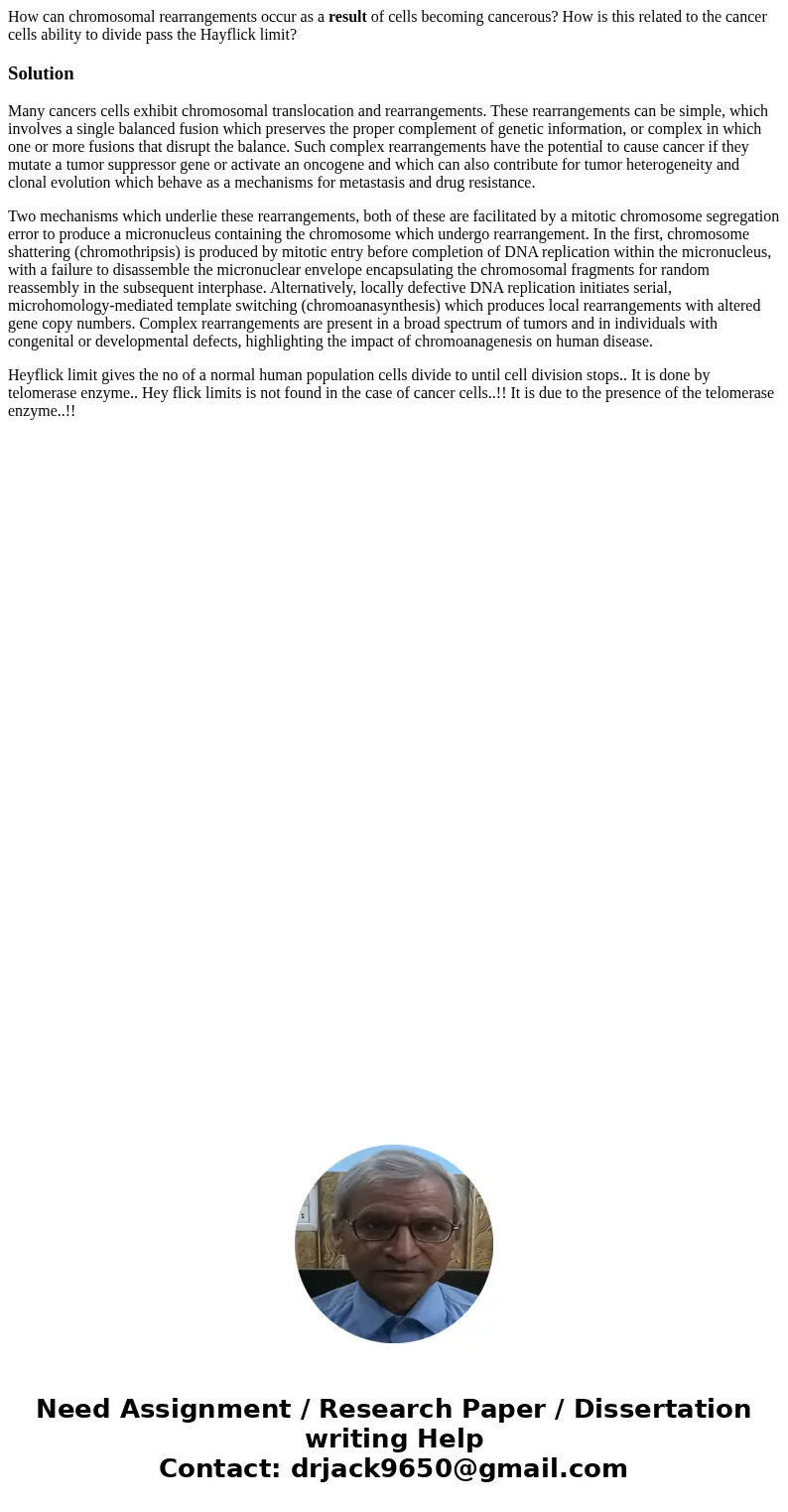How can chromosomal rearrangements occur as a result of cell
How can chromosomal rearrangements occur as a result of cells becoming cancerous? How is this related to the cancer cells ability to divide pass the Hayflick limit?
Solution
Many cancers cells exhibit chromosomal translocation and rearrangements. These rearrangements can be simple, which involves a single balanced fusion which preserves the proper complement of genetic information, or complex in which one or more fusions that disrupt the balance. Such complex rearrangements have the potential to cause cancer if they mutate a tumor suppressor gene or activate an oncogene and which can also contribute for tumor heterogeneity and clonal evolution which behave as a mechanisms for metastasis and drug resistance.
Two mechanisms which underlie these rearrangements, both of these are facilitated by a mitotic chromosome segregation error to produce a micronucleus containing the chromosome which undergo rearrangement. In the first, chromosome shattering (chromothripsis) is produced by mitotic entry before completion of DNA replication within the micronucleus, with a failure to disassemble the micronuclear envelope encapsulating the chromosomal fragments for random reassembly in the subsequent interphase. Alternatively, locally defective DNA replication initiates serial, microhomology-mediated template switching (chromoanasynthesis) which produces local rearrangements with altered gene copy numbers. Complex rearrangements are present in a broad spectrum of tumors and in individuals with congenital or developmental defects, highlighting the impact of chromoanagenesis on human disease.
Heyflick limit gives the no of a normal human population cells divide to until cell division stops.. It is done by telomerase enzyme.. Hey flick limits is not found in the case of cancer cells..!! It is due to the presence of the telomerase enzyme..!!

 Homework Sourse
Homework Sourse